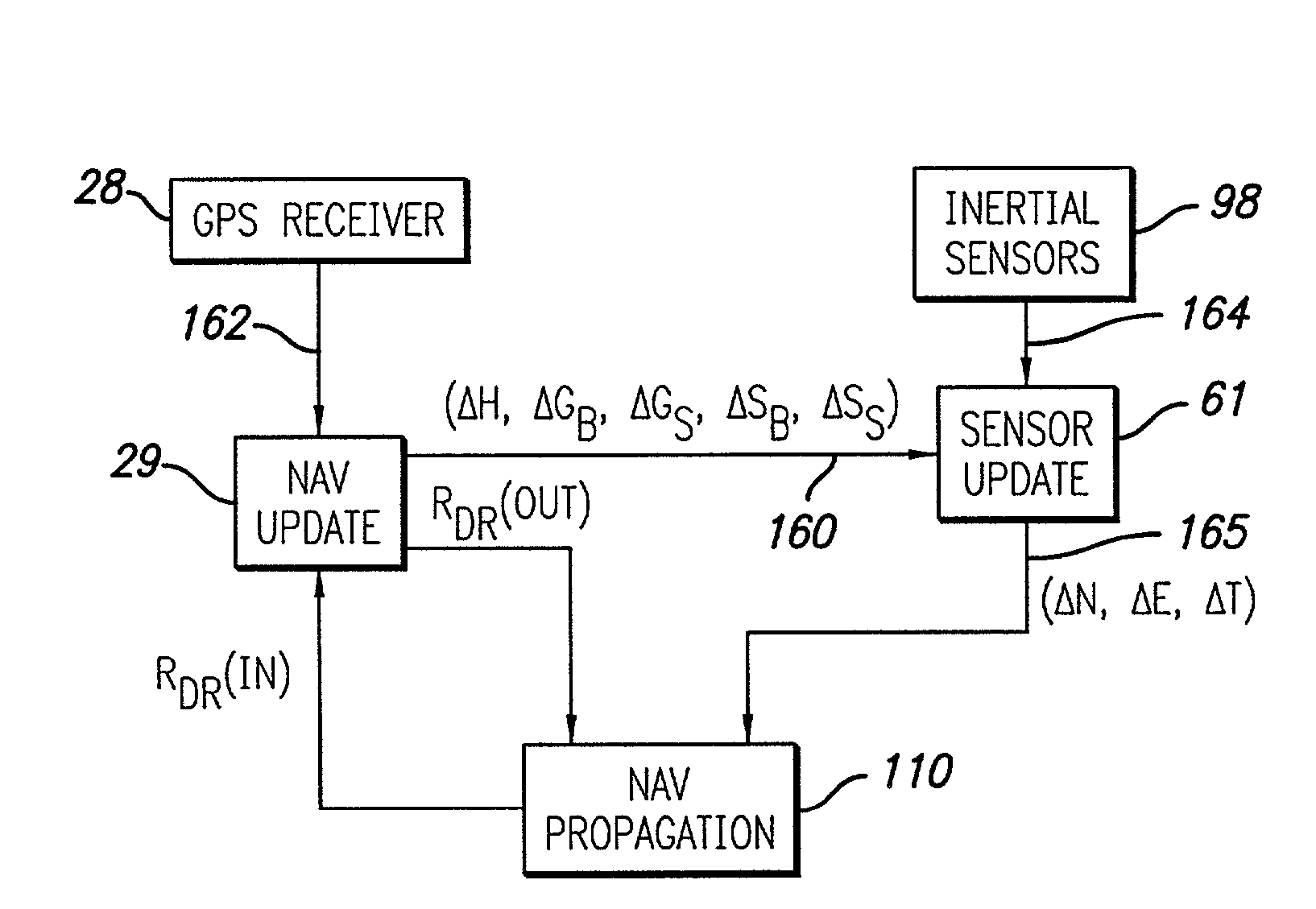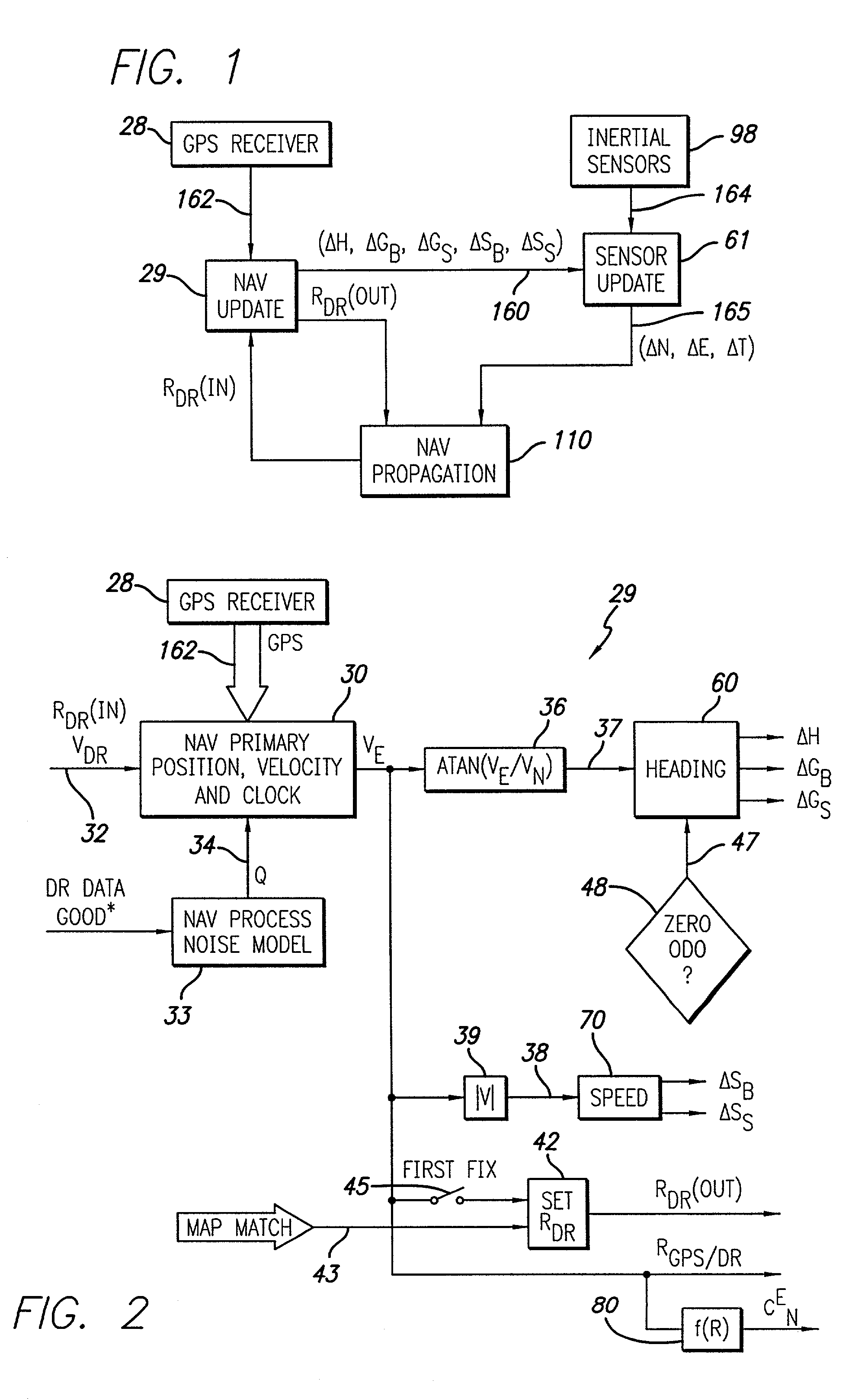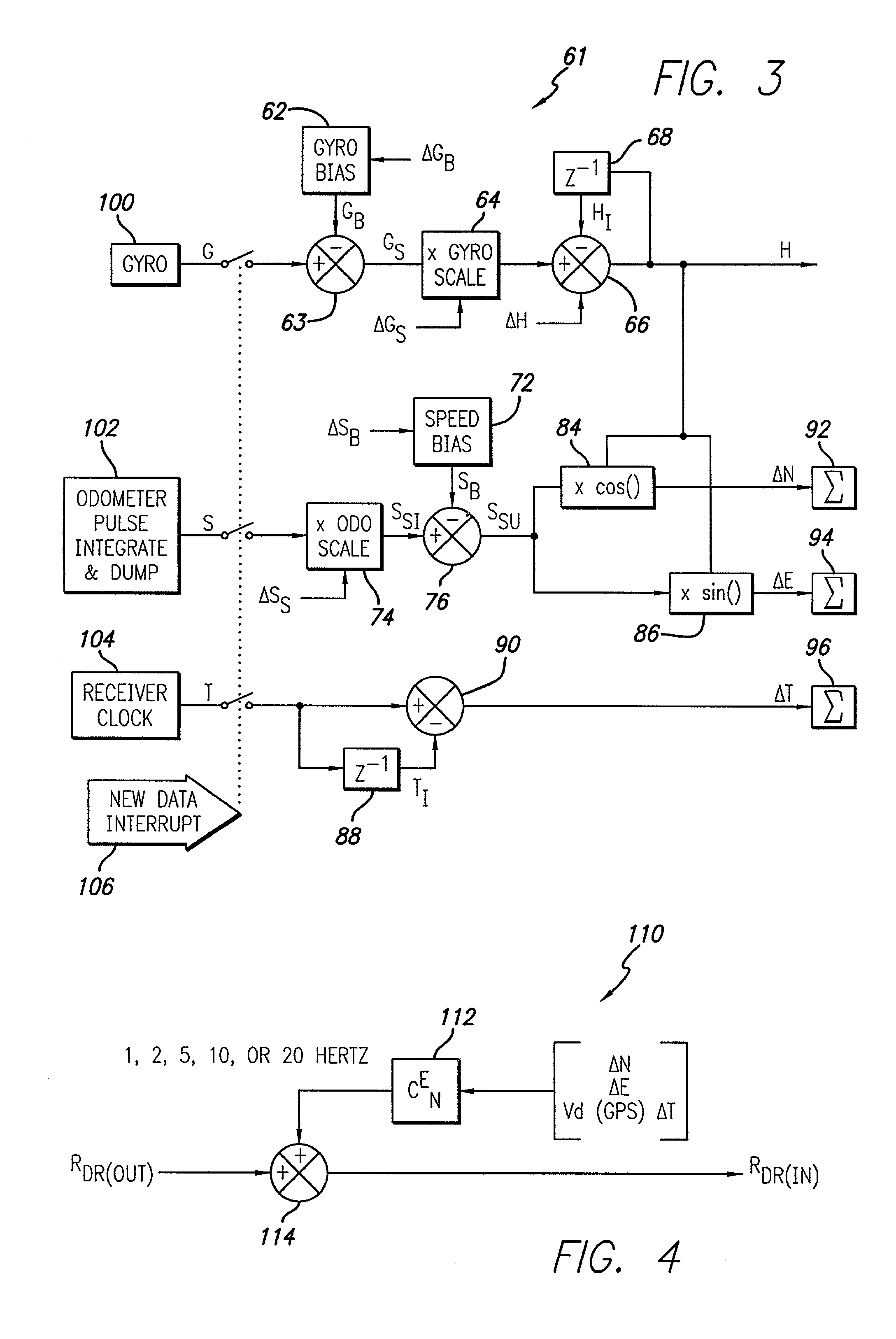Navigation system and method for tracking the position of an object
a technology of navigation system and position tracking, applied in the field of navigation system, can solve the problems of signal interruption, inertial sensor quality and cost, automotive gps application performance degradation, etc., and achieve the effect of accurate position solution, reduced dynamic uncertainty, and reduced uncertainty in vehicle dynamics
- Summary
- Abstract
- Description
- Claims
- Application Information
AI Technical Summary
Benefits of technology
Problems solved by technology
Method used
Image
Examples
Embodiment Construction
[0042] Referring now to the drawings, wherein like reference numerals denote like or corresponding parts throughout the drawing figures, and particularly to FIG. 1, there is shown a navigation system incorporating aspects of the present invention. The system itself is typically employed within a moving object, such as an automobile or other vehicle. The system includes a navigation update unit 29, a sensor update unit 61 and a navigation propagation unit 110. The navigation update unit 29 receives as inputs GPS measurements 162 from a GPS receiver 28 and dead-reckoning measurements R.sub.DR(in). Using these measurements, the navigation update unit 29 calculates changes in navigation measurements 160. The navigation measurements 160 includes changes in heading .DELTA.H, gyro bias .DELTA.G.sub.B, gyro scale factor .DELTA.G.sub.S, speed bias .DELTA.S.sub.B and speed scale factor .DELTA.S.sub.S. The navigation measurements 160 are fed into the sensor update unit 61. Additionally, the na...
PUM
 Login to View More
Login to View More Abstract
Description
Claims
Application Information
 Login to View More
Login to View More - R&D
- Intellectual Property
- Life Sciences
- Materials
- Tech Scout
- Unparalleled Data Quality
- Higher Quality Content
- 60% Fewer Hallucinations
Browse by: Latest US Patents, China's latest patents, Technical Efficacy Thesaurus, Application Domain, Technology Topic, Popular Technical Reports.
© 2025 PatSnap. All rights reserved.Legal|Privacy policy|Modern Slavery Act Transparency Statement|Sitemap|About US| Contact US: help@patsnap.com



